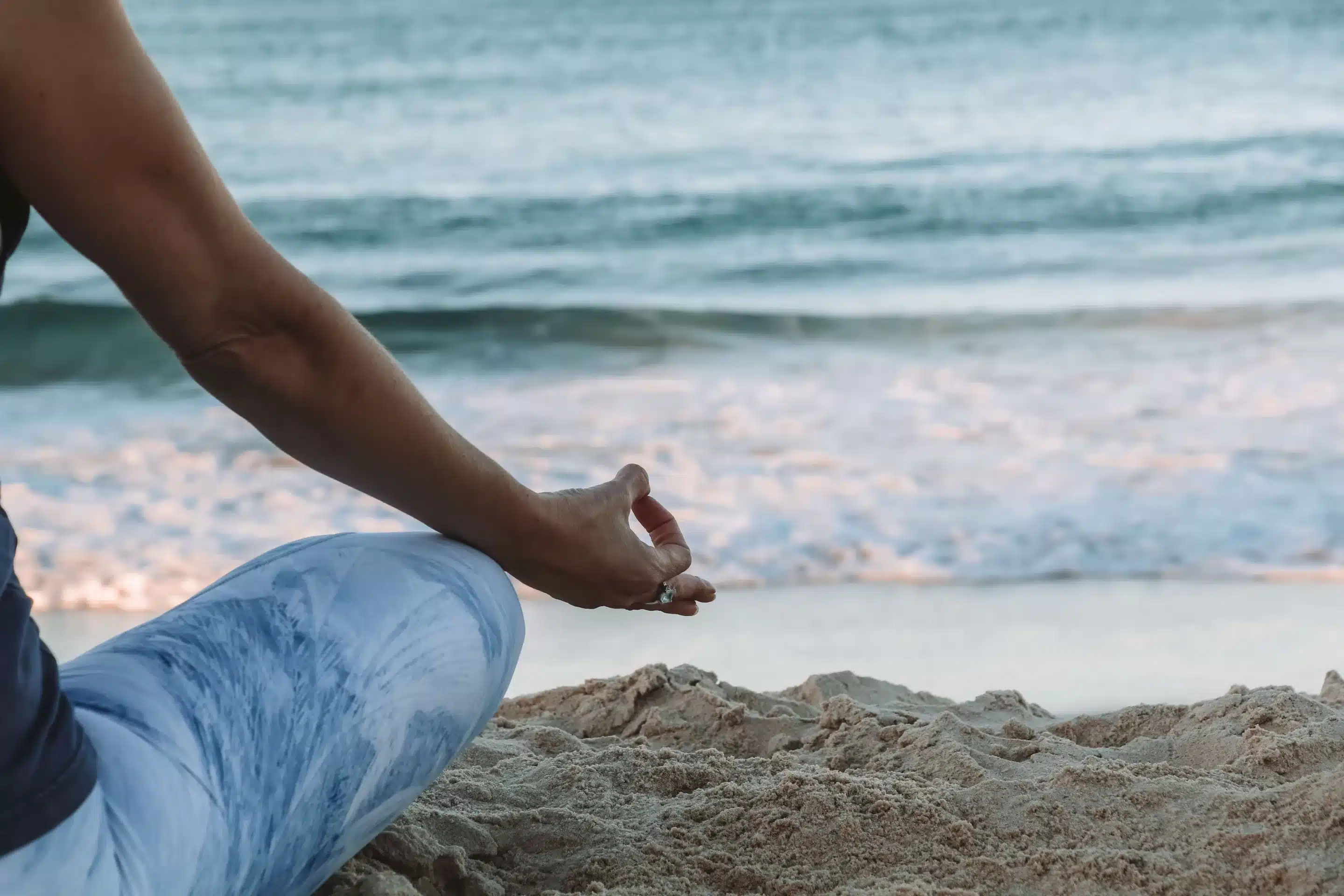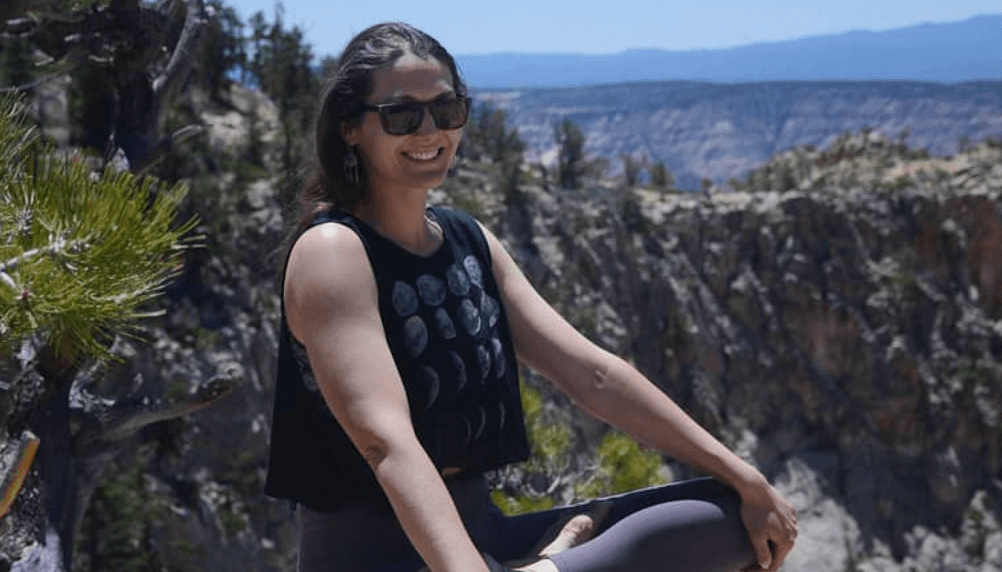Our modern lives are more hectic than ever, and sometimes the overwhelm can have negative effects on our body and mind. That’s why more and more people are curious about trying meditation for the first time, thanks to its long list of benefits.
If you are yearning for inner peace and serenity meditation might be the answer you’ve been searching for. Meditation is a very simple practice rooted in ancient traditions that offers many benefits for the mind, body, and soul. Mediation has been scientifically proven to reduce stress and anxiety, enhance focus and clarity, and create a better mind-body connection.
However, starting your meditation journey can be daunting without proper guidance. In this article, we will explore the key tips to help beginners experience meditation for the first time and embrace tranquility like never before.
Let’s go over all the essentials to ensure a rewarding and fulfilling meditation experience.
- The Benefits Of Meditation
- What It Means To Meditate
- Setting Up Your Meditation Space
- Breathing Techniques During Meditation For The First Time
- Finding The Right Meditation Technique For You
- Tips For Staying Focused During Meditation
- Dealing With Common Challenges And Distractions
- Incorporating Meditation Into Your Daily Routine
- How Long Does It Take To Get Good At Meditation
- Resources For Guided Meditation And Mindfulness Apps
- Conclusion: Embracing Tranquility Through Meditation
The Benefits Of Meditation
Meditation is not just a trendy wellness buzzword; it’s a practice with a rich history and many proven benefits. Research shows, regular meditation can improve mental and physical health in various ways.
Meditation is based on focusing on the present moment and letting go of racing thoughts. Over time this can help us calm down when we get anxious in the future.
Meditation also enhances emotional well-being. Regular practice can increase self-awareness and emotional resilience. This allows practitioners to more easily cope with life’s ups and downs.
Meditation can also improve cognitive function, including concentration, memory, and creativity. Meditation helps sharpen mental clarity and enhance productivity by training the mind to stay focused.
In addition to these mental and emotional benefits, meditation also has physical advantages. Studies have shown that meditation can lower blood pressure, reduce inflammation, and boost immunity. Regular practice can also improve sleep quality,
Incorporate meditation into your daily routine to experience these transformative effects.
What It Means To Meditate
Before diving into meditation, it’s essential to understand its purpose and what it means to actually meditate. At its core, meditation is a practice that involves training the mind to focus and redirect thoughts. It’s a means of cultivating mindfulness and developing a heightened sense of self-awareness.
Contrary to popular belief, meditation is not about “emptying the mind” or achieving a completely blank mind. Instead, meditators learn to observe thoughts and emotions without judgment. Then let them pass without attachment.
The goal is to develop a non-reactive and non-judgmental attitude toward one’s thoughts and experiences. The practice of non-reactiveness can greatly help one stay calm in stressful situations in the future.
There are many different meditation techniques available to try. Each technique is unique in its own way, but they all share the common goal of quieting the mind and cultivating a sense of inner peace and stillness. A state of meditation can even be achieved while walking, which is a type of moving meditation.
On this new path to meditation, keep an open mind and try out different techniques to find what resonates with you. What works for one person may not work for you there is no one-size-fits-all approach to meditation. Experiment with different techniques and find the one that suits you the best.
Setting Up Your Meditation Space
Creating a dedicated space for your mediation practice can help you stay consistent and give importance to your practice. While it’s not necessary to have a large or elaborate space, having a designated area can help signal to your mind that it’s time for meditation.
Choose a quiet and peaceful corner of your home where you can sit undisturbed for the duration of your practice. Ideally, the space should be free from clutter and distractions. You can enhance the ambiance by adding elements that promote relaxation, such as candles, incense, or calming artwork.
Invest in a comfortable meditation cushion or chair to support your posture during meditation, maintaining an upright yet relaxed posture is crucial for optimal breath flow and focus. If sitting on the floor is uncomfortable, you can also meditate on a chair with your feet grounded.
Your meditation space doesn’t have to be perfect (you can practice on top of your bed, or even sitting up against a wall!) What matters most is that it feels inviting and helps you achieve a sense of calm.

Breathing Techniques During Meditation For The First Time
You hear it all the time, “Just breathe!,” or “Take a breath.” The power of this phrase cannot be understated, utilizing the breath to calm our body and mind is incredibly powerful and has been proven. So, it goes without saying that the breath is a fundamental anchor in meditation.
Whether it’s during meditation or in our everyday lives, the breath serves as a focal point to bring the mind into the present moment. By paying attention to your breath, you can train your mind to stay focused and centered.
Deep Belly Breathing
One of the simplest and most effective breathing techniques for meditation is deep belly breathing. Start by finding a comfortable seated position, either on a cushion or a chair. Close your eyes and take a few deep breaths, allowing your abdomen to expand as you inhale and contract as you exhale.
As you continue to breathe deeply, focus your attention on the sensation of your breath entering and leaving your body. Notice the rise and fall of your abdomen with each breath. If your mind begins to wander, gently bring your attention back to your breath without judgment or frustration.
4-7-8 Breath
Another popular breathing technique in meditation is the 4-7-8 breath. This technique involves inhaling for a count of four, holding the breath for a count of seven, and exhaling for a count of eight. Repeat this pattern several times, allowing your breath to guide you into a state of deep relaxation.
Box Breathing Or Counting Breath
An even more straightforward technique is to just simply count to 4 with each inhale and exhale; inhale for 4 seconds, then exhale for 4 seconds.
This will help you stay focused and let any thoughts that may arise be easily quieted. Once you get a rhythm and are really tuned into your breath, you can slowly drop the counting. At any point, if you feel the thoughts begin to take over again, return to counting the breaths.
As you become more comfortable with meditating, you can try more complicated breathing techniques like, ujjayi breath or Nadi Shodhana. You can also add mantras that can be said internally or out loud. Even further, you can simultaneously use mudras, which are certain ways of holding your hands and fingers to activate energies within and without the body.
Experiment with different breathing techniques and find the one that resonates with you. Know that the breath is an important part of the meditation practice and can be used as a tool to take you deeper into your practice. Even better, it is ALWAYS available to use!
Finding The Right Meditation Technique For You
With countless meditation techniques available, it can be overwhelming to know where to start. The key is to find a technique that resonates with you and aligns with your goals and preferences.
For beginners, it’s best to start with something simple like mindfulness meditation. Here are a few popular meditation techniques to explore:
Mindfulness Meditation
This technique involves focusing your attention on the present moment and observing your thoughts and sensations without judgment. It cultivates a sense of non-reactivity and allows you to develop a deep understanding of your mind.
Loving-Kindness Meditation
Also known as Metta meditation, this technique involves directing loving-kindness and compassion towards yourself and others. It helps cultivate a sense of empathy and connection with all beings.
Transcendental Meditation
The Transcendental Meditation technique involves the use of a mantra, a word or phrase repeated silently, to facilitate a state of deep relaxation and transcendence. It is often practiced for 20 minutes, twice a day.
Guided Meditation
This technique involves following a recorded or live guided meditation, where a teacher or instructor leads you through the meditation process. It can be helpful for beginners who may find it challenging to stay focused on their own.
Meditation is a personal practice, and what works for one person may not work for another. Explore these techniques and find the one that resonates with you. Trust your intuition and allow yourself to find the technique that feels most authentic and beneficial to you.
Tips For Staying Focused During Meditation
Staying focused during meditation can be challenging, especially if it’s your first time meditating. The mind has a natural tendency to wander, and it’s normal to experience a stream of thoughts during your practice. However, with patience and practice, you can train your mind to stay focused and present.
Here are some tips to help you stay centered during meditation:
Set An Intention
Before beginning your meditation, take a moment to set an intention or a purpose for your practice. It could be as simple as cultivating inner peace or developing mindfulness. Having a clear intention can help anchor your focus and give you motivation to practice.
Start With Short Sessions
If you’re new to meditation, it’s helpful to start with short sessions and gradually increase the duration as you build your practice. Starting with just five or ten minutes can make meditation more approachable and set you up for success.
Use Guided Meditations
The internet and apps are filled with tons of free guided meditations which can be a helpful tool especially for beginners. They provide verbal instructions and guidance, helping you stay focused and navigate through different aspects of the practice.
Gently Redirect Your Attention
When your mind starts to wander, gently redirect your attention back to your breath or chosen focal point. Avoid getting caught up in frustration or self-judgment. Instead, acknowledge the distraction and gently guide your focus back to the present moment. It gets easier with practice.
Cultivate Self-compassion
Meditation is a practice of self-compassion and non-judgment. Be kind and patient with yourself as you navigate through the challenges of staying focused.
For the lucky ones, meditation is a lifelong journey, and each session is an opportunity for growth and self-discovery. Embrace the process and trust that with consistent practice, your ability to stay focused will improve.

Dealing With Common Challenges And Distractions
At first, it can seem almost impossible to “quiet the mind,” like seriously, besides meditation when has anyone really tried to quiet their thoughts? It’s during meditation when you bring all your focus inward, then you realize how much dialogue is happening inside your head.
Meditation, like any practice, comes with its own set of challenges and beginners should not be discouraged. During your first meditation session, you might feel intimidated by the idea of trying to make all your thoughts just simply disappear. But the truth is that we are not trying to make our thoughts disappear, we just want our minds to be more peaceful and to not allow our psyche to attach to each passing thought. Trust the process and know it will get easier.
Here are some common challenges and tips for dealing with them:
Restlessness
It’s common to experience restlessness or discomfort during meditation, especially if you’re new to the practice. If you find it challenging to sit still for an extended period, try incorporating gentle movement into your practice, such as walking meditation or yoga.
Monkey Mind
The mind tends to jump from one thought to another, often referred to as the “monkey mind.” If you find your thoughts racing, try visualizing your thoughts as clouds passing by or leaves floating down a stream. This visualization can help create distance and detachment from the thoughts.
Impatience
It’s natural to want immediate results from your meditation practice, but meditation is a gradual process that requires patience and consistency. Trust that with time, you will experience the transformative effects of meditation.
External Distractions
External distractions like noise or interruptions can easily ruin your meditation practice. If you’re meditating at home, try using earplugs or playing soft, soothing music to drown out external sounds.
If possible, let your family or roommates know you are about to meditate so they can help you in your journey. Also know that with time, you will become less bothered by distractions as you get better at meditating and maintaining focus.
Inconsistent Practice
Consistency is key to getting all the benefits out of meditation. Establish a regular meditation routine that works for you, whether it’s daily, a few times a week, or a specific time of day. Treat your meditation practice as a non-negotiable appointment with yourself and put it on your calendar or to-do list. Try setting a daily alarm just for your meditation practice.
By addressing these common challenges and finding strategies to overcome them, you can maintain a consistent and fulfilling meditation practice. Meditation is a journey of self-discovery, and every challenge is an opportunity for growth and deepening your practice.
Incorporating Meditation Into Your Daily Routine
To fully experience the benefits of meditation, you need to practice, practice, practice. And yes, that may be easier said than done, but like any other routine, once you “get in the groove,” it’s a lot easier to continue.
Here are some tips for seamlessly integrating meditation into your daily life:
Set A Regular Time
Choose a specific time of day that works best for you and dedicate it to your meditation practice. It could be early morning, during a lunch break, or before bedtime. By establishing a regular time, you create a habit and make it easier to stick to your practice.
Start Small
If you’re new to meditation or have a busy schedule, start with shorter sessions, such as five or ten minutes. It’s better to have a short and consistent practice than to skip it altogether because of time constraints.
Create Reminders
Set reminders or alarms on your phone or use meditation apps that offer reminders. These reminders can help you stay accountable and remember to take time for your meditation practice.
Join A Community
Join a meditation class at your local yoga studio. You can also search for meditation events in your area. Sharing your experiences and challenges with like-minded individuals can provide support and encouragement on your meditation journey.
Be Flexible
While having a consistent routine is beneficial, it’s also important to be flexible. If you’re unable to meditate at your usual time, find another time during the day to squeeze in a quick meditation session.
By incorporating meditation into your daily routine, you make it a priority and create space for self-care and introspection. Soon you will be a meditation guru!
How Long Does It Take To Get Good At Meditation
Meditation does not come easy for anyone, Buddhist Monks practice meditation practically their entire lives and still strive for more tranquility. Because that’s just the point, it’s called a “practice” because you can never master it, you just keep trying to get a little bit better or a little bit deeper every time.
The truth is that you are going to be “good” at meditation on your very first try because bringing your awareness inward and attempting to quiet your mind is the main objective of meditation. And with each practice, it will get easier to quiet the mind and tune into your center.
On my personal journey, I started by meditating for only 5 minutes at a time, I just could not sit for longer than that. Slowly I started to transition to 10 minutes by focusing on my breath, and using mantras internally. A meditation practice that was at least 15 minutes or longer is when I would really start to dive into a very deep state of bliss.
Most practitioners of meditation are able to achieve a deep relaxed state quickly in their practice in only a matter of months (with consistent dedication,) or up to a year.
Some meditators claim to hallucinate or enter other realms when they sit and meditate for longer periods of time. Everyone is different and all that matters is that you will immediately start feeling the benefits of meditation once you start your practice.
Resources For Guided Meditation And Mindfulness Apps
In today’s digital age there are so many resources available to support your meditation practice. Whether you prefer guided meditations or mindfulness apps, these resources give guidance and inspiration.
Here are some popular resources to explore:
1. Headspace
This popular mindfulness app offers guided meditations, sleep sounds, and courses on various topics, including stress reduction and focus improvement. They offer both free and paid plans.
2. Calm
Calm is another popular app that provides guided meditations, sleep stories, and soothing sounds to help you relax and unwind. They offer both free and paid plans.
Insight Timer is a meditation app with a vast library of guided meditations, music tracks, and talks from leading meditation teachers and mindfulness experts.
4. YouTube
YouTube is a treasure trove of meditation resources. You can find guided meditations, meditation music, and instructional videos from unlimited meditation teachers.
5. Meditation Retreats And Workshops
Consider attending meditation retreats or workshops to deepen your practice and learn from experienced teachers. These unique experiences can provide a supportive environment for growth and self-discovery.
Explore these resources and find the ones that resonate with you. Remember, these resources are tools to support your practice, but the real work happens when you commit to showing up for yourself and dedicating time to your meditation practice.
Conclusion: Embracing Tranquility Through Meditation
Trying out meditation for the first time is the beginning of a beautiful and fruitful journey, one that will offer a pathway to inner peace and tranquility. By following these beginner’s tips, you will easily find a meditation routine that you can fit into your daily life.
So get out your meditation cushion and don’t hesitate to try meditation for the first time!



0 Comments